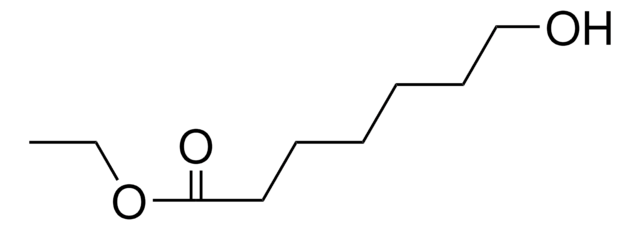379700
10-Hydroxydecanoic acid
technical grade
Synonym(s):
NSC 15139
About This Item
Recommended Products
grade
technical grade
form
solid
impurities
<15% intermolecular dilactone
mp
75-77 °C (lit.)
SMILES string
OCCCCCCCCCC(O)=O
InChI
1S/C10H20O3/c11-9-7-5-3-1-2-4-6-8-10(12)13/h11H,1-9H2,(H,12,13)
InChI key
YJCJVMMDTBEITC-UHFFFAOYSA-N
Looking for similar products? Visit Product Comparison Guide
General description
Application
- Synthesis of copolymers of acrylamide and sodium acryloyloxydecanoate
- Macrolactonization for preparation of Sansalvamide A
- Studies of chain length selectivity for cutinase catalyzed polycondensation reactions
- Ruthenium-catalyzed esterification followed by macrocyclization
- Synthesis of anhydrides and esters
Storage Class Code
11 - Combustible Solids
WGK
WGK 3
Flash Point(F)
Not applicable
Flash Point(C)
Not applicable
Personal Protective Equipment
Certificates of Analysis (COA)
Search for Certificates of Analysis (COA) by entering the products Lot/Batch Number. Lot and Batch Numbers can be found on a product’s label following the words ‘Lot’ or ‘Batch’.
Already Own This Product?
Find documentation for the products that you have recently purchased in the Document Library.
Customers Also Viewed
Our team of scientists has experience in all areas of research including Life Science, Material Science, Chemical Synthesis, Chromatography, Analytical and many others.
Contact Technical Service













